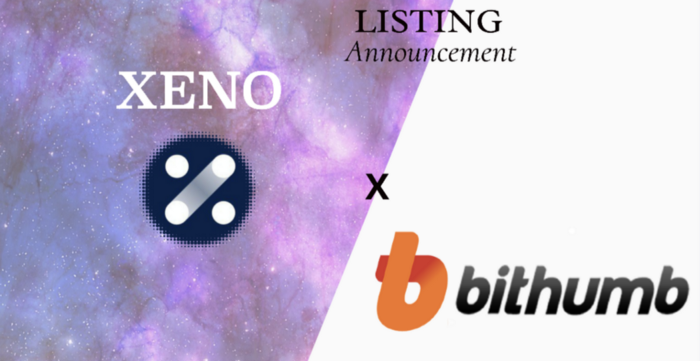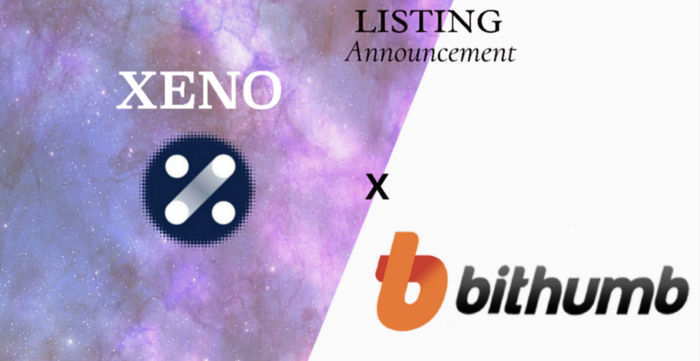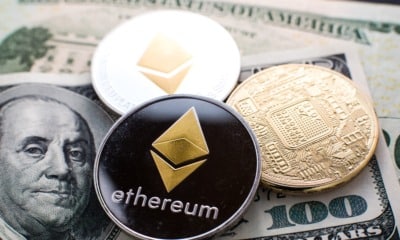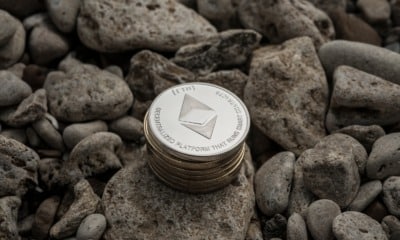Trade
Five Of The Most Promising Crypto Projects With Real-Life Potential

Ten years on from the launch of the original cryptocurrency, bitcoin, there are thousands of cryptos in existence today, each with a unique function. Which of them are most likely to truly change the world?
The Bitcoin project laid the foundations on which a majority of cryptos now operate. It was established in an attempt to offer a workable alternative to the mainstream financial systems.
Its famous white paper, Bitcoin: A peer-to-peer electronic cash system, was published in October 2008, only weeks after the collapse of Lehman Brothers, then the fourth largest investment bank in America.
That was the start of the worldwide financial crash. Because concerns about trust, privacy, autonomy, and liberty were at an all-time high, the Bitcoin project’s timing was perfect.
The white paper proposed “a purely peer-to-peer version of electronic cash would allow online payments to be sent directly from one party to another without going through a financial institution”.
Bitcoin and more advanced cryptos have solved numerous problems outlined in the white paper, leading many experts to suggest that this form of digital currency represents the future of money.
With an inbuilt safeguard against fraud and false identity – thanks to the blockchain technology that underpins bitcoin and countless other cryptos – greater transparency, plus lower fees for cross-country transactions, and by being free from government interference, cryptos have begun transforming payment systems around the world.
Some of the cryptos spawned from bitcoin are likely to be more successful than others. Here follows five of the most promising crypto projects with real-life potential. All five – Ethereum, Dash, Stellar, IOTA, and EOS – are available to buy outright and trade on leading social trading and investment platform eToro.
ETHEREUM / ETHER (ETH)
Ever since the Ethereum network was launched in July 2015, its associated currency – also called ethereum, or ether (ETH) – has proven hugely popular for investors. This is because of its impressive transaction speed, compared to bitcoin, and also its widespread adoption.
To appreciate the benefits of the ethereum cryptocurrency, first one needs to understand Ethereum. It is a decentralised, open-source, public-distributed computing platform that runs smart contracts: applications that run exactly as programmed without any possibility of downtime, censorship, fraud or third-party interference.
The Ethereum network has given rise to hundreds of DApps (decentralised applications), built and deployed by developers. This programmable blockchain technology has many applications; digital currency is just one of them.
In the Ethereum protocol and blockchain there is a price for each operation. Ether is simply the unit of cryptocurrency used on the Ethereum blockchain, and is used to pay for computation time and for transaction fees.
It did not take long for the cryptocurrency of the Ethereum platform, co-founded by Russian-Canadian programmer Vitalik Buterin, to be established as the second-biggest crypto in terms of market capitalisation.
Mr Buterin published his Ethereum white paper that set out the desire to create a platform on which decentralised applications could be built in November 2013.
The Ethereum project raised close to $20 million in pre-launch funding in July and August 2014. As a platform Ethereum has gained momentum, thanks to the backing of some serious players. The United Nations, Toyota, Deloitte, and many others sought to take advantage of its enormously powerful shared global infrastructure. And big financial institutions, such as JP Morgan and Credit Suisse, and tech titans, including Microsoft, have invested heavily in a bid to fulfil its potential.
What is so special about the Ethereum platform? Until recently, developers seeking to build blockchain applications have needed a background in coding, cryptography, mathematics as well as significant resources. Ethereum has changed that. Previously unimagined applications – from electronic voting and digitally recorded property assets to regulatory compliance and trading are now actively being developed and deployed faster than ever before – have been made possible by providing the tools with which the developers can build DApps.
Experts expect the Ethereum platform to scale and become a ubiquitous feature of the post-blockchain internet and corporate landscape. The potential, for both Ethereum and ether, is huge.
Cryptocurrencies can fluctuate widely in prices and are therefore not appropriate for all investors. Trading cryptocurrencies is not supervised by any EU regulatory framework. Your capital is at risk.

DASH (DASH)
Dash (DASH) is a portmanteau of “digital” and “cash” and is an open source peer-to-peer cryptocurrency that offers the same features as bitcoin, but has advanced capabilities, crucially. These include instant transactions, private transactions and ‘Decentralised Governance Blockchain Budget’ (DGBB).
It has been one of the world’s most popular cryptocurrencies for investors ever since its inception in early 2014. That is largely because of its impressive transaction speed, which compares very favourably against bitcoin, and other cryptos.
Evan Duffield designed Dash – initially called XCoin and then Darkcoin, briefly, before its current name stuck in March 2014 – for its pace and anonymity. Specifically, it was Dash’s processing time that made it an immediate hit in the crypto community.
Dash’s platform has been likened to PayPal, and its tokens are well established as one of the top-10 cryptos. Dash is unique as a cryptocurrency – a reason many tech enthusiasts invest in the coin, as it diversifies their portfolios and might be viewed as a hedging tool against bitcoin.
In addition to bitcoin’s feature set, it offers instant transactions (InstantSend), and private transactions (PrivateSend). Further, it operates a self-governing and self-funding model that enables the Dash network to pay individuals and businesses to perform work that adds value to the network. This governance and budgeting system makes it a decentralised autonomous organisation (DAO).
Cryptocurrencies can fluctuate widely in prices and are therefore not appropriate for all investors. Trading cryptocurrencies is not supervised by any EU regulatory framework. Your capital is at risk.

STELLAR (XLM)
The Stellar network is an open-source blockchain that allows cross-border transactions with equal access for all users involved. Launched in 2014, Stellar was the brainchild of ex-Ripple Labs so-founder Jed McCaleb after he and the rest of the board had conflicting ideas for the overall vision of the project.
The concept behind the Stellar Network is to push currencies to the background, fiat or digital, enabling people to have access to a quicker, cheaper and more efficient way to make cross-border transactions.
Stellar uses lumens (XLM) as the network currency. There were initially 100 billion Lumens created but the supply is infinite as lumens have an annual growth of 1 per cent. The current transaction time when using lumens is minimal, taking between two and five seconds to complete. Not only is this network fast, but the cost of a transaction using lumens is only .0001 XLM.
Partner organisations of the Stellar Network – dubbed “anchors” – are trusted entities such as banks or companies that provide a line of credit for people to use the platform with assets such as pounds and euros, and so on.
Stellar has an impressive inbuilt feature which is a decentralised exchange that matches buy and sell offers from anchors that hold currencies, in an attempt to find the best exchange rate. The Stellar network can be used to exchange any currency the anchors hold; this includes other cryptocurrencies.
A combination of significant partnerships with likes of IBM and Deloitte, fast transaction times and low fees mean Stellar’s future looks promising.
Cryptocurrencies can fluctuate widely in prices and are therefore not appropriate for all investors. Trading cryptocurrencies is not supervised by any EU regulatory framework. Your capital is at risk.
IOTA (IOTA)
The IOTA project aims to become the distributed ledger for the Internet of Things (IoT). Its growing legion of supporters believe that as a cryptocurrency IOTA, which uses unique Tangle architecture, has a number of advantages over blockchain-based cryptos. Namely: it is infinitely scalable; decentralised; modular; and has zero transaction fees.
In 2018 there are some 31 billion devices that rely on the Internet of Things (IoT) in the world, according to London-headquartered analysts IHS Markit. That number is growing exponentially, with millions of more new sensors added every week, as the planet becomes ever-more connected.
David Sønstebø, the founder of IOTA, believes he has devised a solution that will serve as the backbone of the emerging IoT world. He says IOTA – an open-source distributed ledger protocol that goes “beyond blockchain” and is an acronym of Internet of Things Application – was developed to enable the “paradigm shift” to IoT by establishing a “de facto standardised ‘ledger of everything’”.
The thinking is that this cryptocurrency will allow data exchange between sensor-equipped devices that populate IoT. The IOTA cryptocurrency is one aspect of the overall IOTA platform, and is designed to serve as the universal method of payment for the future of machine-to-machine transactions that take place on the IOTA network.
Crucially, unlike most cryptos the IOTA platform does not use a blockchain. Instead it is underpinned by a blockless technology its creators call “Tangle”. The IOTA Tangle is a quantum-proof solution spawned from another mathematical concept known as “directed acyclic graphs”. The developers argue that this design is what separates IOTA from all other major cryptos.
Within the design there is the removal of crypto miners, without sacrificing decentralisation. And by taking away the requirement for miners there is there no need for fees, therefore IOTA is completely free to use.
The idea is that everyone plays an equal role within the network. Every time a transaction is made, the issuer needs to help authenticate two previous and random transactions. The process uses a series of cryptographic algorithms, as well as a number of other sophisticated techniques, to complete this behind-the-scenes work.
Transactions on the IOTA platform can be processed on any device in real time, and the unique architecture means the crypto has two important features: it allows microtransactions – ie those that are worth fractions of pence, or cents in fiat currency (and well below the threshold required for Visa payments, for instance) – at speed.
The world will become ever-more connected with IoT technology, and as more people use the IOTA platform, its transactions per second will be even more impressive than it already is.
Cryptocurrencies can fluctuate widely in prices and are therefore not appropriate for all investors. Trading cryptocurrencies is not supervised by any EU regulatory framework. Your capital is at risk.
EOS (EOS)
Can EOS.IO be the “Ethereum killer” that its numerous avid supporters predict it will become? The signs are certainly promising. The white paper on the Hong Kong-based project was only published in 2017, and it didn’t take long for EOS (EOS) – the cryptocurrency token of the blockchain-powered system that promises a decentralised application (DApp) platform – to break into the top-10 cryptos in terms of market capitalisation.
The EOS.IO platform was launched in late January 2018 by block.one – a startup and pioneer in the blockchain space, working towards the promotion of DApps and smart contracts, in particular.
Incredibly, block.one has raised over $4 billion in its ongoing Initial Coin Offering (ICO) – a record. That huge financial backing means research and development can continue on a large scale for decades, in theory.
Like Ethereum – whose ether (ETH) the second-largest crypto by market cap at the moment – Chinese project NEO, and also Ripple Labs, EOS.IO is aiming to become a significant player in the blockchain arena.
It has set out to do this by creating a benchmark platform for utilising the nascent and potentially world-changing technology that could transform finance, healthcare and many other industries.
Written in the coding language of C++, the hope is EOS.IO will catalyse the dawn for mass blockchain adoption.
Buying cryptocurrencies is not appropriate for everybody. Cryptocurrencies are not regulated. They are not backed by governments or central banks. Cryptocurrencies are backed by technology and trust. You will not benefit from the protections available to clients receiving regulated investment services, such as access to the Investor Compensation Fund for clients of Cypriot Investment Firms, or the Cypriot Financial Ombudsman Services Compensation Scheme. UK clients will not benefit from protections available from the Financial Services Compensation Scheme (FSCS) and the Financial Ombudsman Service (FOS) for dispute resolution. You are at risk of losing all of your invested capital. This is not investment advice, past performance is no guarantee of future results.
Your capital is at risk.
Altcoins
XNO Token of Xeno NFT Hub listed on Bithumb Korea Exchange


Hong Kong, Hong Kong, 25th January, 2021, // ChainWire //
Xeno Holdings Limited (xno.live ), a blockchain solutions company based in Hong Kong, has announced the listing of its ecosystem utility token XNO on the ‘Bithumb Korea’ cryptocurrency exchange on January 21st 2021.
Xeno NFT Hub (market.xno.live ), developed by Xeno Holdings, enables easy minting of digital items into NFTs while also providing a marketplace where anyone can securely trade NFTs.
The Xeno NFT Hub project team includes former members of the technology project Yosemite X based in San Francisco and professionals such as Gabby Dizon who is a games industry expert and NFT space influencer based in Southeast Asia.
NFT(Non-Fungible Token) technology has recently gained huge focus in the blockchain arena and beyond, making waves in the online gaming sector, the art world, and the digital copyrights industry in recent years. The strongest feature of NFTs is that “NFTs are unique digital assets that cannot be replaced or forged”. Unlike fungible tokens such as Bitcoin or Ether, NFTs are not interchangeable for other tokens of the same type but instead each NFT has a unique value and specific information that cannot be replaced. This fact makes NFTs the perfect solution to record and prove ownership of digital and real-world items like works of art, game items, limited-edition collectibles, and more. One of the ways to have a successful…
Altcoins
XENO starts VIP NFT trading service and collaborates with contemporary artist Hiro Yamagata


Hong Kong, Hong Kong, 24th December, 2020, // ChainWire //
The XENO NFT Hub (https://xno.live) will provide a crypto-powered digital items and collectables trading platform allowing users to create, buy, and sell NFTs. Additionally it will support auction based listings, governance and voting mechanisms, trade history tracking, user rating and other advanced features.
As a first step towards its fully comprehensive service, XENO NFT Hub launched a recent VIP service to select users and early adopters in December 2020 with plans for a full Public Beta to open in June 2021.
“NFTs are extremely flexible in their usage, from digital event tickets to artwork, and while NFTs have a very wide spectrum of uses and categories XENO will initially focus its partnership efforts and its own item curation on three primary areas: gaming, sports & entertainment, and collectibles.”, said XENO NFT Hub president Anthony Di Franco.
He also added “This does not mean we will prohibit other types of NFTs from our ecosystem However, it simply means that XENO’s efforts as a company will be targeted into these verticals initially as a cohesive business approach.”
Development and Procurement Lead, Gabby Dizon explained, “Despite our initial focus, we found ourselves with a unique opportunity to host some of the works of Mr. Hiro Yamagata. We are collaborating with Japanese artist Hiro Yamagata to enshrine some of his artwork into NFTs.”
Mr. Yamagata has…
Altcoins
My Crypto Heroes Announces Issuance of MCH Governance Token


Tokyo, Japan, 24th November, 2020, // ChainWire //
My Crypto Heroes is happy to announce the issuance of MCH Coin as an incentive to players in the My Crypto Heroes ecosystem, aiming to allow them to craft a “User-oriented world”. The MCH coin is available on Uniswap with a newly created pool with ETH.
My Crypto Heroes is a blockchain-based game for PC and Mobile. It allows users to collect historic heroes and raise them for battle in a Crypto World. Officially released on November 30th, 2018, MCH has recorded the most transactions and daily active users than any other blockchain game in the world.
What is MCH Coin?
MCH Coin is being issued as an ERC-20 Standard Governance Token. The issuance began on November 9th, 2020, with 50 million tokens issued.
Of the funds issued, 40% are allocated to a pay for on-going development and as rewards for advisors and early investors. 10% are allocated to marketing and the growth of the ecosystem, and 50% are allocated to the community. The Distribution Ratio of the MCH Coin is subject to change via a governance decision.
The MCH coin will be used as a voting right as part of the ecosystem’s governance, with 1 coin being 1 vote. It will also be used for in-game utilities and payments. Additional information can be found here:
https://medium.com/mycryptoheroes/new-ecosystem-with-mchcoin-en-a6a82494894f
During December 2020 the first…
-

 Blogs6 years ago
Blogs6 years agoBitcoin Cash (BCH) and Ripple (XRP) Headed to Expansion with Revolut
-

 Blogs6 years ago
Blogs6 years agoAnother Bank Joins Ripple! The first ever bank in Oman to be a part of RippleNet
-

 Blogs6 years ago
Blogs6 years agoStandard Chartered Plans on Extending the Use of Ripple (XRP) Network
-

 Blogs6 years ago
Blogs6 years agoElectroneum (ETN) New Mining App Set For Mass Adoption
-

 Don't Miss6 years ago
Don't Miss6 years agoRipple’s five new partnerships are mouthwatering
-

 Blogs6 years ago
Blogs6 years agoCryptocurrency is paving new avenues for content creators to explore
-

 Blogs6 years ago
Blogs6 years agoEthereum Classic (ETC) Is Aiming To Align With Ethereum (ETH)
-

 Blogs6 years ago
Blogs6 years agoLitecoin (LTC) Becomes Compatible with Blocknet while Getting Listed on Gemini Exchange













